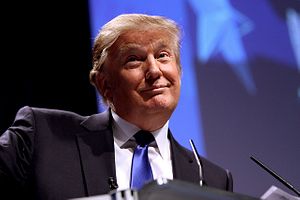The election of Donald Trump signals the all-but-official death of the Trans-Pacific Partnership. The TPP, a free trade initiative born during the George W. Bush administration, was negotiated and forcefully promoted by the Obama administration (including by then-Secretary of State Hillary Clinton who backed away from it on the campaign trail). Pulling out of the deal, which has been signed but not yet ratified by U.S. Congress, has long been on Trump’s very short list of specific policy actions he would take as president.
Trump’s plan for his first 100 days in office lists withdrawing from the TPP as the second of seven actions he would take “to protect American workers.” The first is renegotiation or withdrawing from NAFTA.
The Australian press did not mince words as to the implications of Trump’s election on the trade deal. On November 9, ABC News ran an analysis with the title, “TPP: Trade pact dead, buried, cremated amid Donald Trump presidency.”
The agreement stipulates that for TPP to enter into force, six of the 12 signees need to ratify the deal; those six account must for at least 85 percent of the GDP of the original 12 participating countries. As Ankit Panda explained in October 2015, shortly after the agreement had been signed, “The United States and Japan between them represent just shy of 80 percent of the GDP of the 12 original TPP signatories (specifically, the U.S. represents nearly 62 percent of TPP GDP and Japan accounts for 17 percent).” Without ratification by the U.S. and Japan, the TPP is dead.
The TPP has been the target of immense criticism in the United States, especially from the left, part of a larger anti-free trade wave. Free trade, the lowering of tariffs and other trade barriers, is not a painless proposition, even if economists taking the long view say that such agreements ultimately benefit both businesses (by opening new markets) and people (by lowering costs).
Trump’s opposition to the TPP is rooted in the same arguments that have been lobbed against NAFTA, an agreement settled between the United States, Canada, and Mexico in 1994 under President Bill Clinton. The core critique is that such agreements are responsible for the flight of U.S. manufacturing jobs. Insomuch as that may be true at face value, the U.S. Chamber of Commerce says doing away with the NAFTA agreement could lead to massive job losses and rising prices.
Trump’s transition website (greatagain.gov) says, “Free trade is good as long as it is fair trade.” The policy statement goes on to tout American workers (“the best in the world”) and decry trade deals that have not prioritized Americans. The statement blames previous government policies (“crushing regulations and taxes”) for driving U.S. factories overseas.
Now that TPP is dead, what does that mean for free trade, especially in the Asia-Pacific?
The TPP has 12 members — Australia, Brunei, Canada, Chile, Japan, Malaysia, Mexico, New Zealand, Peru, Singapore, the United States, and Vietnam — some of which the United States has separate pre-existing free trade agreements with.
Canada and Mexico are covered by NAFTA; if that is also scrapped, Canada is covered by an FTA signed with the United States bilaterally in 1988 and highly unlikely to be the target of the kind of vitriol hurled at NAFTA. Canada, for its part, says it is open to renegotiating NAFTA.
Other American partners further south have separate agreements as well. Chile signed onto an FTA in 2004 and Peru settled a Trade Promotion Agreement (TPA) with the Bush administration in 2007.
In Asia, Australia and Singapore both signed FTAs with the United States in 2004.
In light of these agreements, the death of TPP is less a step backwards as it is simply an absence of further progress. That doesn’t mean it is without additional consequences.
The TPP was, in many ways, the core of the U.S. rebalance to Asia and without it, the progress of free trade in the region will move ahead without the United States. As Shihoko Goto argued in the latest issue of The Diplomat Magazine, “U.S. reluctance to embrace the TPP has put U.S. credibility itself at stake.”
“The single biggest risk, though, is that this may well be the United States’ only chance to be part of establishing a trade agreement at this scale,” Goto writes. Asia’s ever-growing economic weight is something discussed ad nauseum, but Goto concludes that “the existing institutions and rules are simply not adequate to meet the evolving needs of Asia’s dynamic economies. Establishing rules and institutions that will meet the needs of the 21st century is critical. The question remains how those rules and institutions will be established.”
TPP was the United States’ potentially only path to influencing the development of those rules and institutions, especially in the countries which do not have separate free trade agreements with Washington.
Moreover, other Trump statements promise to further inflame tensions between the United States and China, which stands to gain from seeming U.S. abdication of developing regional trade structures. Immediately after withdrawing from TPP on the Trump 100-day action plan is labeling China a “currency manipulator.” Other campaign promises were to levy a 45 percent tariffs on Chinese imports. Such a tariff would require congressional assistance to pass but would undoubtedly lead to skyrocketing prices on U.S. shelves everywhere. These are the seeds of trade wars.

































